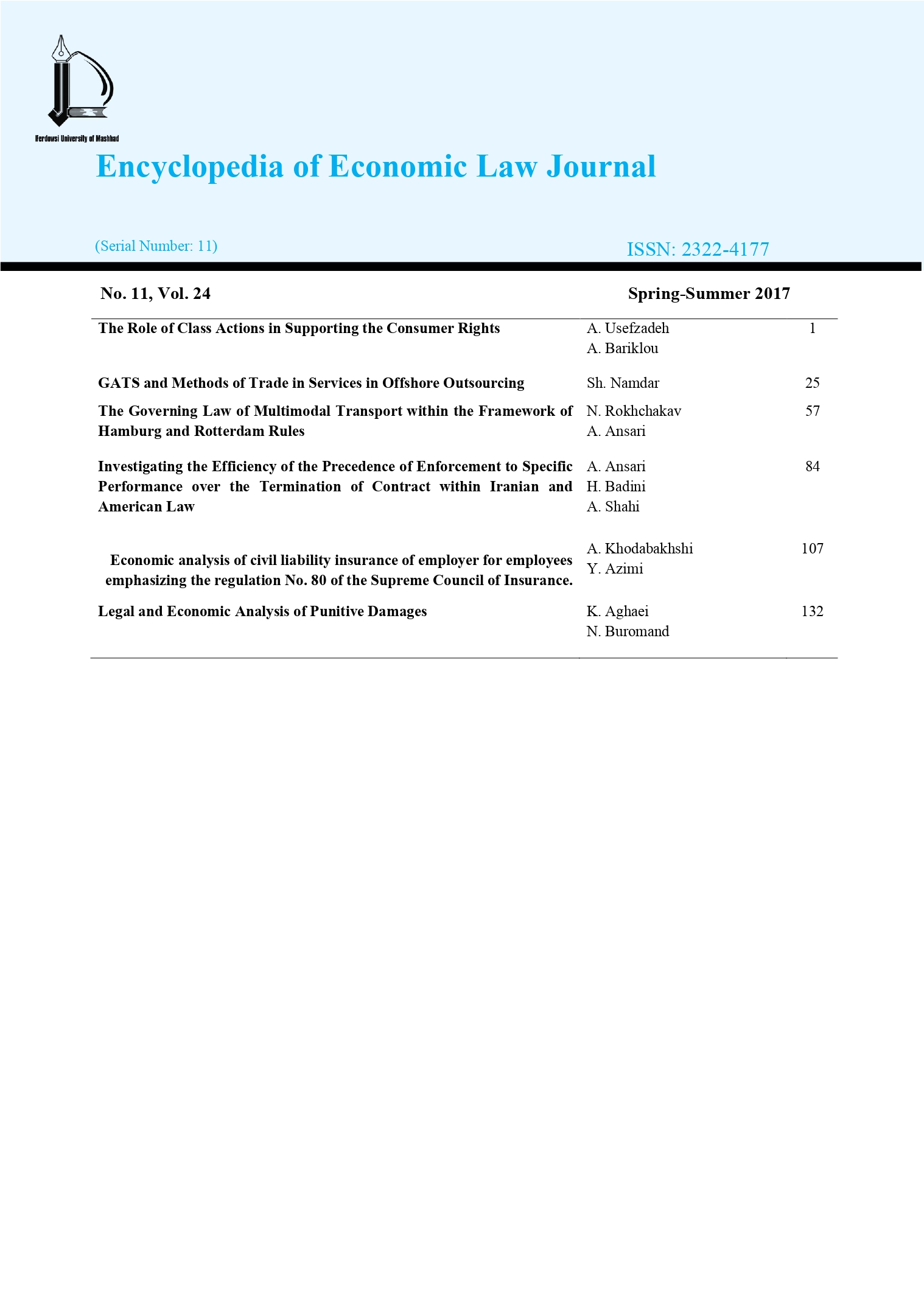Document Type : Scientific research
Authors
1 ferdowsi
2 payame noor
Abstract
In Iran, the civil liability insurance of employers for employees is issued on the basis of the regulation no. 80 dated 22 January 2013 of the supreme council of insurance. This regulation was approved according to the article 17 of the law of establishing the Central Insurance of Iran and insurance matters. The title of this regulation is "general conditions of the civil liability insurance of employers for employees" with 24 articles and 4 notes that is an essential step towards the documentation of regulations in the field of liability insurance.
Prior to the enactment of this regulation, general terms used by an insurance company were prepared by them. Of course, Central Insurance of the Islamic Republic of Iran would appearantly supervise them. In practice, however, there was a significant difference between operating conditions in insurer companies. Approval and issuance of this regulation, in addition to regulating the general conditions of insurance policy, have some critical consequences from the standpoint of economic analysis.
Nowadays, in the field of work-related accidents, discussions have passed from the causes of accident and employer's responsibilities and reached the stage of full compensation.
The tendency of legal systems to compensate for the maximum damage has led employers to insure the whole or a major part of the risk of these incidents through the employer's liability insurance policy towards the employees. Bearing this in mind, the Supreme Council of Insurance has also sought to draft regulation No. 80. In this regulation, traditional concepts are preserved and some unnecessary rules are mentioned, yet some other rules do not conform to the maximum compensation and sometimes it seems to be in conflicts.
The regulation’s major issues as follows:
The use of non-specialized concepts such as "professionalism" that affects reinsurance issues and makes insurance companies pay more to central insurer. ambiguity in some of the concepts like the insured which does not include some individuals or insurance coverage Or this inclusion is in doubt. Since employer's liability insurance is set up to provide mployee’s damages, it is necessary to provide a clear definition of this concept Because the term of workers and employees may be used in different meanings. In particular, the labor code defines the worker by the "haghosay" term and regulation no. 80 with "hagholamal".
From the point of view of insurers’ obligations, the regulation No. 80 has been termed "main" and "Diyah" or "Arsh", which has different meanings and realms. The concept of bodily defect is current in accident insurance and does not cover all types of physical harm while the "Diyah" is related to physical incidents and any damage sustained by the court, after the inquiry from Forensic Medicine and determination of the type of injury.
The right of subrogation is an option for insurer and not obligation to claim but in the case of Regulation No. 80, subrogation is one of the obligations of insurer which does not have good economic results. The duty to declare an incident and the rules to intensify the risk are also incompletely explained and sometimes controversial. The issue of double insurance and the one that should be refered in the case of multiple insurers and what is the order of reference for purification of damages, is not properly described and can affect the economic performance of claims and costs of insurers to refer to each other.
It is common for all insurance companies to take out some incidents or losses from insurance coverage (insurance policy exceptions). This is the case in Regulation No. 80, but there are also problems in this regard. For example, the concept of insurance incident has been questioned about occupational disease, and insurers do not accept the disease as an insurance incident. However, in jurisprudence, courts will compensate for the loss of occupational disease if they are caused by a failure of an employer and the employer is virtually deprived of insurance coverage or will be forced to bring a lawsuit against the insurer. Clearly, in this case, the cost is significant.
As for the limitations, it was better not to mention it because limitation has been abrogated in all types of insurance and by referring to it in the Regulation No. 80, Legal disputes will resume and as a result, It causes conflicts and loses of economic benefits of injured person.. The subject of this study is to review the aforesaid regulation with an economic approach.
This paper consists of five subjects. In the first speech, we will examine the basic concepts (definitions and terms) used in Regulation. The second is related to the duties of the insurer and the third is related to insurer's duties.damage outside the insurer's liability is in the fourth speech and in the fifth speech, it will discuss about limitation.
Keywords


Send comment about this article